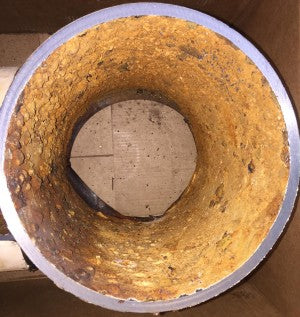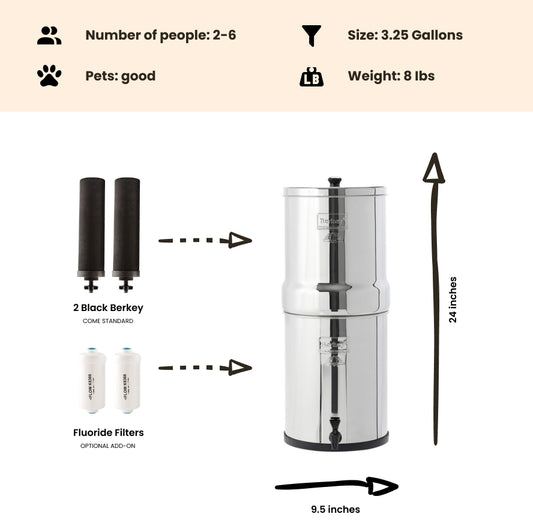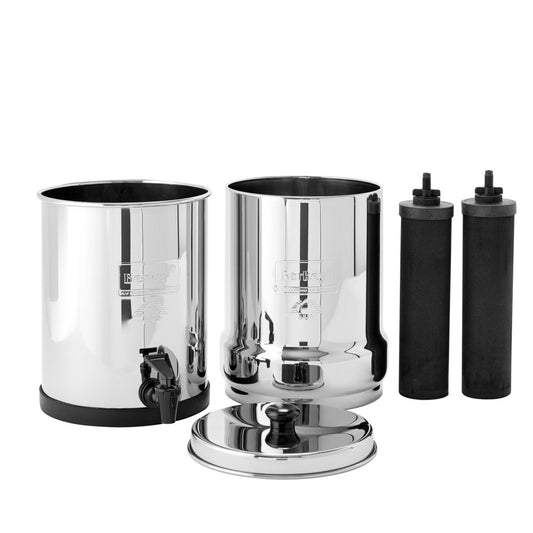
How Toxic Chromium-6 Gets into Drinking Water, and What to Do About It
By Dan DeBaunShare
The Flint water crisis highlighted the health risk that corroding pipes in the water distribution network could potentially pose as a result of changes in water chemistry. Now a new study that was recently published in the American Chemical Society's journal Environmental Science & Technology has found that when corroded cast iron water pipes are exposed to residual disinfectant it can release toxic hexavalent chromium, or chromium-6, into the drinking water flowing through the pipes.
Chromium is a metal that is used in cast iron alloy to improve corrosion-resistance of the material. But as cast iron alloy water pipes age, they eventually do corrode, resulting in an accumulation of scale deposits on the inner walls of the pipes. Chemicals that may be present in the water flowing through the pipes can react with these scaly deposits and form new compounds which may then be released to contaminate drinking water. Some of these new compounds can contain chromium-6, a highly toxic carcinogen that can cause a wide range of health issues including developmental issues, reproductive problems, liver damage and lung cancer.

Scale on the inside of cast iron alloy pipes can react with residual disinfectant in the water to release Cr(VI).
In 1996, the residents of Hinkley, Californian, received a $330 million settlement from PG&E for damages relating to health and suffering caused by exposure to chromium-6 in contaminated drinking water — made famous in the film Erin Brockovich. In 2014, the state of California tried to implement measures to reduce exposure in drinking water, setting the drinking water standard for chromium-6 at 10 micrograms per liter (mcg/L). However, they later withdrew this guideline since there was no financially viable method of removing chromium-6 from drinking water available.
For this study, the researchers wanted to discover exactly how chromium-6 gets into drinking water, as they believe this information might help develop new methods of preventing chromium-6 from forming in the water supply.
New Chromium 6 Study Results
The team analyzed the composition of scale deposits scraped from two sections of cast iron water pipe they had collected from two different drinking water distribution networks in the US. One water pipe was obtained from a water distribution network that used groundwater that had naturally high chromium-6 levels (11-24 mcg/L), while the other pipe was collected from a water distribution network that used surface water with no detectable chromium-6 present. They found that the level of total chromium was around 18 times higher in the pipe that serviced the network using groundwater with naturally high levels of chromium-6 compared to the pipe servicing the network with undetectable levels of chromium-6. In both samples, chromium was present in two oxidation states: chromium-0 and chromium-3, neither of which are considered toxic to humans. However, when they exposed the scale to a bromine- or chlorine-based disinfectant — both of which are commonly used to treat drinking water — they found the disinfectant rapidly reacted with the chromium-0, as apposed to the chromium-3 as previously suspected, to form the more toxic chromium-6.
According to the authors, these findings could help develop new strategies to prevent chromium-6 from forming in drinking water supplies, such as using disinfectant products that are less reactive for treating drinking water, and using cast iron water pipes that contain chromium alloy with caution.
Protect Yourself From Chromium 6 in Drinking Water
Since most water utilities do NOT test for chromium-6, you may be exposed to this highly toxic contaminant without even knowing you are at risk. While water managers experiment and deliberate over new strategies to reduce your exposure to chromium-6 in drinking water, the health and well being of your family may still be at risk. However, the good news is that you can take your own measures to protect your family by investing in a good quality drinking water filter, such as the Big Berkey or any other filter in the Berkey water filter range, that is capable of removing chromium-6 and other toxic heavy metals such as lead, as well as a wide range of other drinking water contaminants that could harm your health.
Journal Reference
Cheng Tan, Sumant Avasarala, Haizhou Liu. Hexavalent Chromium Release in Drinking Water Distribution Systems: New Insights into Zerovalent Chromium in Iron Corrosion Scales. Environmental Science & Technology, 2020; DOI: 10.1021/acs.est.0c03922
-
Regular price $234.00 USDRegular priceUnit price / per
-
Regular price $327.00 USDRegular priceUnit price / per
-
Regular price From $367.00 USDRegular priceUnit price / per
-
Regular price From $408.00 USDRegular priceUnit price / per
-
Regular price From $451.00 USDRegular priceUnit price / per
-
Regular price From $478.00 USDRegular priceUnit price / per
-
Regular price $332.50 USDRegular priceUnit price / per
$350.00 USDSale price $332.50 USDSale

Dan DeBaun
Dan DeBaun is the owner and operator of Big Berkey Water Filters. Prior to Berkey, Dan was an asset manager for a major telecommunications company. He graduated from Rutgers with an undergraduate degree in industrial engineering, followed by an MBA in finance from Rutgers as well. Dan enjoys biohacking, exercising, meditation, beach life, and spending time with family and friends.
~ The Owner of Big Berkey Water Filters















